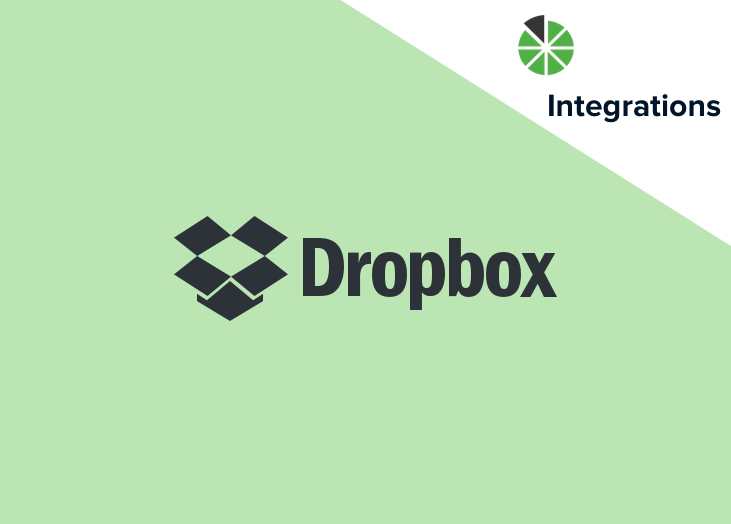We’re excited to welcome Roarke “Rocky” Suarez to our team as a Customer Support Specialist! Join us in learning more about the newest member of our growing BrightGauge team… In the beginning Rocky, ...
We’re excited to welcome Roarke “Rocky” Suarez to our team as a Customer Support Specialist! Join us in learning more about the newest member of our growing BrightGauge team… In the beginning Rocky, like so many of his fellow BrightGaugers, says he’s been a born-and-bred Miamian since day 0! After growing up in sunny South Florida, he decided to stick around for college and earned his degrees from Miami Dade College and the Computing School of Florida International University. Post-college, Rocky set out to see the world. He spent six months traveling through Thailand, Australia and New Zealand and picked up some career experience along the way, working as an IT intern in the Circular Quay area of Sydney. Most recently, Rocky worked as a Customer Support Specialist for a business management software company called HHA Exchange. There, he updated internal software and made medicare compliance changes in accordance to national and state regulations for at-home healthcare. Joining BrightGauge The Customer Support team is happy to have snagged Rocky as our latest Customer Support Specialist. Prior to joining, Rocky was intrigued by our podcasts and by a conversation with founder and CEO, Brian Dosal. He says that those things made the BrightGauge office environment very apparent to him before interviews even started. “One of the most important things for me is the work-life balance and environment at work,” says Rocky. “So much of my life is dedicated to my work and we spend so much time in the office, so a good environment is priority number one.” We think he’ll fit right in. Rocky is looking forward to being a part of the “best and well-designed support environment I have seen to date” (his words) and to learn more about the MSP industry. Out of office When not in the office, Rocky enjoys exploring his newfound interest in working out and healthier eating, but also makes time for watching anything on Netflix, especially comedy specials. When it comes to reading, Rocky has a passion for science fiction novels and deciphering their philosophical implications. Perhaps you’ll find him doing this on a beach thousands of miles away from Miami, as traveling is always high on his list.

Every business owner and manager knows that maintaining a strong relationship with a solid base of clients is non-negotiable in setting an organization up for success. This takes a lot of work. Clients tend to stick around when business owners and agencies prove themselves to be trustworthy and reliable. Long-term clients mean a positive impact on your bottom line, so transparency should really be a priority for any business manager. This isn’t the first time we’ve said this and it won’t be the last time, but we are big believers in sending consistent client reports to remain transparent and build that trust we’re all looking for. Client reports show that your word is credible and that you are dependable, plus they are a great way to drive accountability within your own team. Why reports are so impactful When a client hires you to provide a service, both parties agree upon and set forth a service level agreement (SLA) with certain benchmarks that will define success. How well or not you adhere to said SLA tells a client a whole lot: whether you’re experienced and knowledgeable, if you’re good at keeping your word, if you’re providing fair and honest service, and (most importantly) if you should be trusted with repeat business. Since customers are investing a lot of their resources into you, it serves you well to consistently show them the work you’re doing for them. Reports are a powerful way to exercise this level of transparency because they pull in metrics that are based on hard data, and numbers don’t lie. Factual data leaves no room to be subjective - it allows one to draw objective conclusions, which leads to wiser business decisions. Basically, you can’t bs your way through a report. If your SLA states that your Ticket Response Time should never go past 5 minutes, you’re going to have to report that number whether it’s 1 minute or 10 (talk about motivation to hit your goals). Reports also pack a punch because they allow you to show a client exactly what they want to see. You don’t need to fluff up a report. Provide clients with straightforward, honest data that gives a comprehensive snapshot into the work you’re doing so they are not left wondering, “what am I paying you for?” Motivation to do your best work By sending frequent, regular reports - let’s say on a daily basis - your clients come to depend on you for consistency. They’re going to see your team’s actual output and knowing this drives an inherent sense of accountability. Therefore, your team members will be motivated to do their best, most productive work on a consistent basis. As humans, we like to feel good. When you take actions that the brain perceives as good, it releases feel-good chemicals that bring on even more happy feelings (the opposite of a vicious cycle). Conversely, when you have feelings of stress, which are likely brought on when you have to report less-than-ideal metrics, your cortisol levels increase, which is bad news for overall health. It’s literally good for your health to do valuable work and remain accountable. This may seem like a stretch, but when you consider the portion of our days and lives that are spent working, it only helps us to take actions that are positive. In the case of client reports, it’s realistic to assume that there will be times when your performance is not up to par, but if you’re persistently trying your best and showing your value to your clients, you’re walking down the right path. BrightGauge makes reporting a no-brainer If you’re using BrightGauge dashboards to view your important key performance indicators in one place, then everything you need to send client reports is at your fingertips. BrightGauge provides insights through many popular datasources, like ConnectWise, IT Glue, Webroot, Quickbooks, and Customer Thermometer, just to name a few. Regardless of the integration you want to connect with, we take the time to pre-build default gauges and dashboards so you can get started right out of the box. Same goes for reports. The insights that you’re already measuring on a daily basis are likely what your client cares to see as well. When you visit the Client Reporting section of BrightGauge, you’ll be prompted to create an internal report or one for your clients. Then, you can opt to start from scratch or choose from our pre-built templates. From there, it’ll take just a few minutes to customize your reports with the exact info you want - including your logo and any contextual copy - and then schedule it to go out on a recurring basis to whoever you want, whenever you want. It takes such little effort on your part to create these reports, but the payoff is huge. When thinking about scaling or growing your business, repeat business can do so much in terms of profitability. Hold yourself accountable to your company’s success by taking actions - such as sending client reports - that, at the very least, make you look good. Wondering who to send reports to, what to include, how to send them, and why you should even bother? We dive deeper into the subject in our free webinar, Client Reporting Best Practices.

Key performance indicators (KPIs) help everyone in your company feel aligned and motivated to work towards a specific outcome. While each individual team member should have personal goals to aim towards, all work should be tied to overall company KPIs. Knowing which KPIs are most important is the tricky part. As a company owner or manager, you have the best idea of where you want to see growth and how you want to track it, and this applies to every team within your organization. Different departments are responsible for multiple areas of growth, so it makes sense that your Service Team KPIs will vary from your Project Team KPIs. We’ve been in this business for a long time and have spoken to plenty of executives along the way and have discovered common threads across the board. When it comes to your Project Team, we’ve found two KPIs that almost always make it to the top of managers’ lists. First, let’s get one thing clear We can’t stress enough that just because we’re listing these top two KPIs, by no means do we believe that other KPIs are less important. Your discretion is what matters most. When you created your company or started working there, you developed a vision for success and you know best how to carve a path for getting there. We’re simply here to offer up suggestions and knowledge based on our own experiences. Our goal for BrightGauge is to make your day-to-day life a bit easier, and we hope the guidance we provide here adds to that. Project Team KPIs Your Project Team is incredibly important because it’s the team that keeps your work moving and flowing. Adhering to the Service Level Agreement (SLA) you and your client created at the onset of your relationship is critical, and your Project Team is going to play a major role in that. Specifically, the number of hours your Project Team members bill and how efficiently they stay in line with your budget will show whether or not you’re on track with your SLA. Therefore, two KPIs we recommend when it comes to your Project Team are Billable Project Hours and Over Budget Projects. Billable Project Hours Some business owners or team leads require their team members to bill a certain number of hours per week, as it ties into recurring revenue, so keeping track of this metric is pretty important. It’s also a good idea to see how many hours are being billed to a specific project because it gives you an idea of whether or not you have adequate resources assigned to that project. This also gives you insight into how well your company and team can handle various scopes. If your team is over-billing on a project, it’s possible that you did not forecast an appropriate number of hours for the required amount of work. As you can imagine, these insights come in handy for future projects. BrightGauge dashboards make it so easy to see every team member’s billable hours in real-time and at a glance. More than likely, we connect with the integration you’re using to input hours (like Harvest, for example), and all our integrations come with pre-built gauges, dashboards, and reports based on the metrics people like you care about the most. This means you’ll be able to get started as soon as you open an account! Over Budget Projects Any project manager knows how important it is to stay on budget. Dealing with finances is a sensitive matter and impacts your bottom line, so you really can’t scrutinize it enough. When you budget a project, you’re setting forth guidelines, just as an SLA does. Abiding by those guidelines makes you reliable and trustworthy and keeps your business running efficiently. You shouldn’t wait until an accountant or financial manager crunches numbers for you to see if anything is falling through the cracks. It’s much more optimal and productive to know where you stand on a regular and frequent basis. Tracking projects that have gone over budget will help you course correct and make data-driven decisions that ensure you’re still on a path to success. Just like the insights you gain when looking at billable hours, Over Budget Projects will tell you if you have enough resources on a task or if there are any missing gaps. Keeping tabs of Over Budget Projects on a real-time dashboard makes it easy to see if you’ve got any glaring issues and it helps prevent problems from turning into full-blown disasters. With BrightGauge, you can drilldown further into the Over Budget Projects gauge to get more information. BrightGauge helps you keep your team motivated With BrightGauge dashboards, you’re able to see your important KPIs in one place and use the metrics displayed to drive impactful business decisions. Beyond that, you can use dashboards to motivate your team. When it comes to billable hours or open projects, put your team members on a leaderboard to inspire a little fun, healthy competition between them. Or, use our Goals feature to keep everyone accountable and striving for results that impact your bottom line and your overall company KPIs in a good way. There’s a whole lot you can do with BrightGauge to make your daily operations more manageable and productive. To learn more about KPIs that make a positive impact, check out our free whitepaper, How to Improve Your Business With KPIs.

If you’ve logged into your BrightGauge in the last week or if you’ve just been browsing on our site, you may have noticed that things look a bit different. We’ve gotten a bit of a makeover and we hope you’re digging our new look. Why the change? Well, if you’re a customer or frequent visitor, you know that we’re constantly thinking of ways to improve our product and make your life a bit easier. That doesn’t only apply to new product features. We want to create a more pleasant and user-friendly experience across the entire BrightGauge platform. Because we’re ever-evolving, we think our design should evolve with the times, so nothing ever feels outdated. We also want to give you a design that’s intuitive, informative, and valuable, and we think our new changes reflect that. So, what’s new? Our login page got quite the facelift. If you remember, this is what it used to look like: It quite simply prompted you to enter your credentials and be on your way. Our new login gives you a bit more: You’ll still be prompted to enter your credentials, of course, but we’ve shifted that over to the right and have left space for any important announcements, updates, or features that we’d like to notify you about. Pretty cool, right? We don’t want you to miss out on all that BrightGauge has to offer, so refer to your login page often. We haven’t changed any of the functionality that you’re used to, so don’t fret, everything is still in place. Now, our website has got a whole new look! We’ve pretty much changed everything in regards to the design. Here’s the BrightGauge site of past days: Today, you’ll notice colorful shapes and patterns (which we also brought into our login page), a cleaner look overall, and an easier way to find the resources you need. Two of our favorite upgrades are super easy access to our support page and the search functionality within our blog. You’ll see a section titled Support in our top navigation. Click on it and head straight to the help zone - submit a ticket, access our knowledge base, watch our training videos, basically do whatever you need to find answers to your lingering questions. We know how critical our Support Team can be in getting you past a road block, so we want to make sure you have quick access to their resources whenever you may need them. Visiting our blog just got more user-friendly, too. When you land on the blog’s homepage, you’ll notice a search bar in the top right corner. Go ahead and type in a keyword or two based on what you’re looking for, and you’ll be directed to all relevant blog posts. Sweet! Take a look around and explore the changes we’ve made. You know how we feel about feedback, so please drop us a line and let us know what you think! Happy navigating :)

The work world is changing. Gone are the days - if ever they existed - of a one-size-fits-all approach to building an organization. Entrepreneurs today are going beyond creating the product or service of their dreams - they’re also inclined to design their own version of the ideal work culture. Whether that means hiring virtual employees from around the world, outfitting employee workspaces with treadmill desks, or adopting a Summer Fridays policy, it’s safe to say we’re in a new generation of corporate culture. However, no matter how much things change in the workplace, our values and commitment to professionalism should always remain in place. It’s still incredibly important to foster client relationships and create a work environment that your employees are proud of, and we believe the practice of transparency is the way to do that. At BrightGauge, we try to be open and adopt habits that encourage transparency, and we’ve picked up a few tips along the way. Being transparent means being reliable We often talk about how important it is to build a foundation of trust with clients and how essential this is to long-term relationships. There are many ways to build a trustworthy relationship and being like an open book is, in our opinion, really effective. Being transparent means you have nothing to hide. You share what you’re doing, how you’re doing it, how it stacks up against promises you made, and where you have room for improvement. With clients, we love sending regular reports that show both the good and the bad in terms of work being done. Fortunately, BrightGauge makes it easy to customize and automatically send interactive reports as often as you want. Clients will love that they can rely on you to show them how their dollars are being put to use. Of course, you can share reports with internal teams, too. This keeps everyone in check and in the loop on key performance indicators, project statuses, and more. But, transparency doesn’t stop there. Be transparent by putting everything in writing Part of the shift towards a new work culture is a new practice of doing away with unnecessary emails, meetings, and other unproductive work distractions. We’re all about being more focused and less attached to emails, but we’re not okay with documentation going down the drain. Have you ever had an important face-to-face conversation that ended with clear (in your opinion) next steps, only to follow up with your colleague some time later to hear them say, “I never said I’d do that.”? Suddenly you’re caught up in a game of he-said, she-said and the important task at hand gets neglected. Know how you could have avoided that? By keeping a paper trail. Written communication is absolutely critical for transparency and keeping everyone aligned. This isn’t about pointing fingers or being a tattletale. It’s about keeping everyone accountable and being transparent with work. And guess what? Email is not the only way to put things in writing. In fact, at BrightGauge, we barely use our email addresses (writer’s note: when I started working here, this absolutely shocked me). What we do use, and strongly believe in, is a business organization tool. Our solution of choice: Basecamp. Much like BrightGauge simplifies work by putting data in one place, Basecamp puts communication all in one place. Relevant messages are threaded together so that all communication surrounding a particular topic is easy to track. To put this into context, imagine a team of developers are working on a complicated piece of code that would add a necessary new feature to your product. There’s a lot of back and forth on the right process, answers to a lot of questions, and approvals on important decisions. Now, first off, this is clearly a situation where documentation is essential, otherwise things can get messy or unravel quickly. If all communication were done via email, it’s possible that something would fall through the cracks. But, in Basecamp, everything is neatly saved in chronological order so it’s really easy to find. To take it one step further, should a lead developer leave your company, his replacement will quickly be able to get up to speed on pending projects by finding the relevant messages within Basecamp. Tools like Basecamp also help everyone to remain meticulously organized, since it allows you to create to-do lists, notes, documents, pitches, specific project folders, and team folders. Literally anything you need to communicate about can be done right in there. What we’re trying to say is, make smart choices This is less about pushing Basecamp and more about stressing the importance of communicating, practicing transparency, and being organized. You can have the most laid-back work environment in existence, but there’s really no excuse for sloppiness. The reality is that employees don’t last forever, but projects have to go on, and once a decision has been made and executed upon, it’s going to live in the interwebs. It’s just smart to document your choices and be transparent about the journey your organization has been on. However you choose to document, be diligent about it, make sure everyone understands your process, and be a stickler about getting it done. Seriously, at BrightGauge, we’re known to have side conversations on Slack that end in “put this in Basecamp.” We’re cool with being accountable for our work, and you should be, too.

70+ Metrics for MSPs
Key metrics and accompanying formulas to help MSPs skyrocket growth and success!
Get your KPIs

If you’ve made the decision to start using BrightGauge, that’s awesome! Welcome to the fam. We hope you’ll find that it helps make your daily lives run more smoothly. We’ve tried to make it really easy for you to get started right out of the box. No matter which datasource you’re connecting with, you’ll get a number of pre-built gauges, dashboards, and reports loaded into your account. Even so, it can be challenging to know whether you’re using BrightGauge to its full potential, so we’ve got a few tips for ya. Take advantage of our support materials We really believe that getting hands-on with the app is the best way to learn what it’s all about. Take a look around, tinker with building your own gauges, personalize your dashboard with images, send yourself a test report, create some goals - really get in there and see what you can learn on your own. Once you’ve settled in, we strongly encourage you to take advantage of what our support team has to offer. They’re here to make sure you have a successful experience, so they’ve built an entire knowledge base with all the self-help tools you’ll need. Our support resources cover how to get started, how to connect to each of our individual datasources, how to build advanced gauges, how to use filters, and so much more. Look for answers using our search bar or post in our community forum to see what your peers have to say. For an extra boost, make sure to schedule a one-on-one training with one of our support team members. We recommend that you do this after you’ve had a chance to explore the app so that you can be armed with specific questions when the time comes for your one-on-one. After all is said and done, if you ever find yourself stuck on any issues, just send the support team a request! They’ll get back to you in no time to help you figure out a solution to your problem. Use every feature available to you You may have signed up for BrightGauge for a specific reason, like the ability to send automated Client Reports, but if you’re not taking full advantage of the app, you may be missing out. Sure, there may be more features than you think you need, but you might be surprised to find how much burden is taken off of your shoulders by utilizing everything BrightGauge has to offer. BrightGauge was started on the premise that it would make the lives of our users a little easier by putting all the important data you care about in one place. That’s why customers love our dashboards. It’s so simple to see where you stand at-a-glance, especially if you use multiple tools like a PSA, an RMM, a financial tool, and a CSAT tracker. Custom gauges can filter data and show you exactly what you’re looking for - a few examples are ticket response time on a given day or week, CSAT score by technician within a custom time period, kill rate percentage today, and profit & loss performance by month. You don’t have to spend valuable time calculating metrics yourself, because BrightGauge will do it for you automatically and will refresh itself regularly. Our Client Reporting feature has been known to save some users up to 10 hours a week! That’s a significant amount of time. If you have a lot of clients or internal departments who rely on you to report on important numbers, this feature is a game-changer. You can create custom, interactive reports and set them to go out on a recurring basis to whoever you want, whenever you want. It’s as easy as just a few clicks. If we had to choose a favorite feature though, it might be our Goals feature. It’s a really powerful way to drive motivation and accountability within your teams. We recommend that you have each individual team member come up with 2-3 quarterly goals based on overall company key performance indicators. They will check in every week and mark whether they’re on or off track and, since everyone has visibility to these goals, they’ll be really excited to hit their targets! Just try using BrightGauge fully - we’re willing to bet it’ll change the way you operate on a daily basis (in a really good way). Use BrightGauge daily Make BrightGauge part of your daily habit so that it’s really ingrained in your routine. Since mostly everything is automated, this isn’t going to require a lot of effort on your end. In fact, using BrightGauge regularly will provide the support and insights you need to make impactful, data-driven decisions that’ll grow your business. Since there’s no need to toggle between windows or log in and out of multiple accounts, it’s easy to keep one BrightGauge tab open all day and refer to it when necessary. Even better, if you are lucky enough to have more than one monitor, use one as your BrightGauge hub. The best way to use BrightGauge every day, in our opinion, is by displaying them on TVs around your office. When everyone has visibility to what’s going on on a daily basis, it’s really empowering and motivating. Plus, if your clients come by for a visit, they’ll be really impressed by your commitment to being proactive. Bonus tip: if you have multiple dashboards, you can set them to automatically rotate every 30 seconds, 1 minute, 2 minutes, or 5 minutes. Let’s say you have 6 technicians on your team and you have a dashboard for each one’s productivity - rotate them and get a clear picture of what they’re up to all day! These BrightGauge best practices should get you off and running pretty efficiently. Like we said before, our support team is here to help so please drop us a note if you’re ever in a jam! We love feedback, so let us know how your BrightGauge experience is going.

When researching the tools that we’d like to add to BrightGauge’s growing roster of available integrations, we take a number of factors into consideration, including how many of you have put in a request for this integration and how simply we can connect to the tool. Many times, it’s such a popular tool that it’s a no-brainer for us to move forward with it. One example? Dropbox. This is one of our most unique integrations, as the data we pull from it wholly depends on you. How to use BrightGauge + Dropbox First of all, connecting to Dropbox is as easy to do as any of our datasources. If you’ve already got a BrightGauge account, visit your homepage, find Dropbox, and enter your credentials. For more guidance, see these step-by-step instructions. We have noticed that this is an often underutilized integration, but one that can be quite simple and impactful to use. The basic premise of this integration is that if you have a .CSV file imported to Dropbox, you can visualize the data on BrightGauge dashboards and reports. That’s it! What do I get out of the box? We weren’t kidding when we said Dropbox is a unique one. Since this integration relies on custom data, there aren’t any pre-built dashboards, gauges, or reports included. Don’t let that scare you into thinking it will be complicated to use. We assume that the daunting aspect of this is that, with so much freedom, it can be hard to determine what exactly you should be doing with BrightGauge and Dropbox. All it takes is a little imagination or a little inspiration from your peers. Examples of BrightGauge + Dropbox Gauges We can’t stress enough the amount of versatility you get with this integration. Perhaps you have information gathered from a tool that we don’t yet integrate with, but that you’d like to see on your BrightGauge dashboard. As long as you’ve got a .CSV with that data, you can display it on our app. Here’s how you can create a dataset from a CSV, along with some CSV requirements. With their Dropbox integration, we’ve seen users track employee PTO, stay on top of important budgets, project quarterly sales numbers, monitor customer satisfaction reactions, view scope of work, and keep an eye on opportunities, to name a few. The gauges look just as you’d expect - like any other gauge from any other datasource. And your Dropbox data is not limited to one type of gauge. Depending on your CSV, you can view data as a number, a graph, a table, a pie chart - all the typical options. PTO Tracking by Employee Monitoring per-project, quarterly, or annual budget Projecting sales numbers per business unit Get creative with your data Your gauges and dashboards don’t have to be all work and no play. Go beyond the operational and get creative with the data you’re putting on display. At BrightGauge, we’ve been known to use Dropbox to see who is winning our March Madness or World Cup competitions, to see our Fitbit data, or - most importantly - to keep inventory of our in-office wine supply! We’d love to know how you’re using your BrightGauge + Dropbox!

Setting the right key performance indicators (KPIs) to guide and motivate your various teams is a big undertaking. You’ve got to look towards the future and decide what growth and success will mean to you and your employees. The right KPIs will help you lay down a solid foundation for building your organization. As we’ve said before, KPIs and trackable metrics will be different for each team in your company. What you look at for your sales team will vary for your financial team, your marketing team, and so on. When it comes to your service team KPIs, there are many different metrics to keep your eye on, and we’ve rounded up the top 8 just ahead. How we determine top KPIs Before we reveal the top 8 service team KPIs, it’s helpful to know how we’ve landed on them. We gather our information in a few ways - looking at industry benchmarks, relying on our years of experience in the industry as MSPs and business owners, and listening to what BrightGauge users like you have said. Because BrightGauge lets you put your KPIs and insightful data in one place with gauges, dashboards, and reports, we’ve seen what many of you are using the app for. When we’re researching the popular integrations to add to our roster, we analyze the type of data you’re looking to gather from these tools. This helps us build a better app for you that you can use right out of the box and it helps us put together insightful information that, we hope, will grow your business and make your lives a bit easier. For instance, your team is probably using a PSA like ConnectWise Manage to run their service desk and, by integrating with BrightGauge, are able to see their critical KPIs update in real-time so that nothing falls through the cracks. This kind of visibility allows you to respond to issues lightning fast and course correct before any major disruption in day-to-day operations takes place. 8 Service Team KPIs Your service or support team is like the backbone of your organization. Those team members are the ones interfacing with clients on a regular basis. They are managing customer concerns and troubleshooting issues every day. Part of your support team’s responsibilities includes making sure your customers are up and running without disruptions to their day-to-day activities. You need to ensure your team is as efficient as possible so that your clients are, too. Equally as important is making sure that your clients feel like they’re taken care of. They need to feel like they are in trustworthy, reliable, and friendly hands, and your support team will, frankly, determine your reputation. Knowing all this, it makes sense that our top KPIs focus on optimizing service desk efficiency and satisfaction. Tickets per Endpoint (per client) This metric creates a ratio between total number of tickets and endpoints, which helps normalize the data. So you may have a client with 100 tickets per month but 1000 endpoints and then another client with 50 tickets per month but 50 endpoints. By looking at the ticket number you might think the lower volume is better but when compared to the endpoints it becomes obvious it’s not. SLA Missed Complying with your Service Level Agreement (SLA) is critical. This is your contract and what will be looked at to determine whether you’re delivering on what you promised. If you are falling short on your SLAs, this is an indication that you may be over-promising your services or may need more resources to be working optimally. Customer Satisfaction Based on surveys, this gives insight into how satisfied your clients are with your service team’s performance. This is really important because you want to ensure your customers are pleased. This will help you determine who is pulling their weight and where there’s room for improvement. Daily/Weekly Utilization Rate Don’t overlook this one because this number can directly contribute to your bottom line. Monitor it to ensure your service team is operating as efficiently as possible and that each technician is being utilized optimally. Issue Backlog/Currently Open Tickets By monitoring the backlog or the number of open tickets at any given time, you’re able to easily see the workload of your entire team or individual team members. If the backlog gets too crazy, you can decide whether to add resources to your team or investigate what’s causing any issues. Kill Rate This looks at your Tickets Closed divided by your Tickets Open over the same time period, usually per day. You want to aim to get a number over 100% because this means that you’re closing more tickets than were opened today, so you’re staying ahead of the backlog. Pro tip: Use thresholds to show your service team how they’re performing at a glance - on your BrightGauge dashboard, set a threshold that sounds an alarm anytime your kill rate falls below 100%. Your techs will know they need to step things up ASAP. Tickets Resolved Today Pretty self-explanatory, but this number tells you how many tickets each technician is resolving on any given day. Looking at this number versus Tickets Opened Today will tell you how productive and efficient your technicians are and, if there’s a lag, what the cause may be. Billable Hours It’s important to see how many hours each of your technicians is billing and what they are spending their time on. This can help you determine if you’re using your resources wisely or if there are changes that need to be made to avoid being wasteful. Use BrightGauge Goals to inspire healthy competition We love the idea of motivating service teams through the use of the BrightGauge Goals feature. This feature allows every member of your team to set quarterly goals based on overall company KPIs. Everyone will have visibility to these goals, so it’s a great motivator and a way to establish a culture of accountability. And we love making a challenge out of goals. Encourage your team to “compete” against each other to see who can be most consistent when it comes to reaching a goal. For example, say you want to have no more than 10 Open Tickets at the end of each week. Each team member can mark their status at the end of the week and the leader can be determined or rewarded. Or, create a challenge where each technician has a Customer Satisfaction rating of 97% or more for at least 10 out of 12 weeks. No one likes to miss a goal (even though it’s okay to do so), so your techs are going to work really hard to make sure they’re doing right by these challenges! While goals should not be tied to performance reviews, they do provide insights as to any gaps that need to be filled or resources that need to be shifted around. For more on service KPIs (including formulas!), plus insight into how ConnectWise Manage and BrightGauge can help you make better, more informed decisions, read our whitepaper: The Service Desk KPIs Top MSPs Rely on for Success & How to Use Them in Your Business.

When you’re first starting your managed service provider (MSP) business (or any business for that matter), there are so many things you have to think about. Apart from the work involved in getting an organization up and running, you’re likely spending hours thinking about how you’re going to define success. Success means different things to different people, but it’s always valuable to have something to compare your progress against. This is where industry benchmarks can offer important and beneficial insights. What are industry benchmarks? These are facts and figures that are compiled based on businesses like your own. Industry benchmarks are used as a standard or reference point and also as a predictor for performance. These figures and data points can be useful when setting goals for the year or determining which key performance indicators (KPIs) will be your point of focus. It’s helpful to have guidelines to keep you on track and to know what to aim for, but be careful not to make direct comparisons between your business and a competitor if not necessary or relevant. For example, if you’re a 10-person operation, don’t expect your numbers to reflect those of an organization with 1,000 employees. Looking at benchmarks month-to-month or year-to-year can help you gauge where you are and where you’d like to be. How are benchmarks calculated? Usually an accounting firm or an agency that specializes in surveys will collect information from a large pool of companies within your industry and they’ll analyze that data to find resulting patterns, trends, and averages. A lot of companies - like our partner, Kaseya - offer the results as a free resource for you to access. What data is included in these benchmarks? It varies according to the firm conducting the survey and the industry it is analyzing, but you’re likely to find commonalities across the board. Mostly all benchmark reports will include: The total number of employees in your company Total annual revenue Revenue growth year-over-year Operational costs Gross margins When it comes to MSP-specific benchmarks, you’ll probably want to look at these figures as well: Your customer size Total number of endpoints you manage Devices you manage Pricing strategy and model Monthly recurring revenue Services offered Use this data thoughtfully and carefully to set your business up as a respected competitor in your industry. You should be making data-driven decisions that move you towards growth and success. Perhaps industry benchmarks reveal that you’re offering your services at above-average prices. Driving down the costs of your services can help you bring in more customers and, ultimately, more revenue. Contact us at BrightGauge if you’re ready to learn more about how your business can benefit from using our data-driven insights.

All departments within an organization play a critical role in that company’s success. Without a good product, there’s nothing to sell. Without a good sales team, there are no customers. Without a good marketing team, there’s no awareness of what you’re offering. Without an accounting team, profits wouldn’t exist. You get the drift. When it comes to tracking progress for each department, the key performance indicators (KPIs) to monitor will understandably vary. While you might track Accounts Receivable, Unpaid Invoices, and Profit for your financial team, you’ll definitely look at Leads From Website, Market Share, and Cost Per Lead when it comes to your marketing team. So what about sales team KPIs? What’s important to look at on a regular basis? We break it down. The Big 3 Sales KPIs Your sales team carries a lot of weight on its shoulders. Amongst other duties, they are responsible for analyzing the leads generated from the marketing team and converting qualified leads into (hopefully) long-term customers. No easy feat. Their progress should be tracked on a regular basis because, not only does it give insight into employee performance, but it also paints a picture of how well the current sales strategy is working. Is there something that needs to change? Should the sales strategy be more aggressive? Do more resources need to be brought in? Because bringing on new customers is imperative to the success of an organization, these metrics should be carefully evaluated and should drive data-backed decisions. But before you go tracking every metric under the sun, keep yourself in check. Don’t fall victim to analysis paralysis. We like to recommend that you set three metrics per employee, so that your process is as streamlined and effective as can be. Closed MRR MTD/YTD One of the most important and telling metrics you can track is your Monthly Recurring Revenue (MRR). This will tell you how well you’re selling and will help you identify trends over time. We believe you should track MRR on both a monthly and yearly basis. It’s natural for your sales to ebb and flow when comparing month to month. Some quarters are slower than others and some months you experience a major boom (maybe you’re attending a lot of conferences that month). By tracking your MRR each month, over time you’ll be able to predict performance and be able to better set SMART goals for success. Tracking MRR on a yearly basis tells a story about how your company is or is not growing over time. Any business owner has a goal of growing more successful over time. When first starting out, you may not be profitable or your growth may be negligible. But the hope is that, as time goes on, you’re able to visibly chart growth and attribute your success to a number of factors. You’ll need to track more than MRR to get a crystal clear understanding of this, but there’s no doubt that MRR needs to be a part of your story. Each member of your sales team will inevitably have his own MRR number to work towards, but it should always tie back to your overall company goal. That way, when turnover happens or there’s a shift in the members of your sales team, you still have a north star to guide you towards your sales goals. Current Sales Pipeline There should never be a point in time where your sales employees are left without calls to make or leads to follow up on. In other words, there should always be opportunities in your pipeline. Tracking your Current Sales Pipeline is another way to predict the number of new customers that will come in (so you can predict your revenue for the month or year). If you notice your pipeline lacking in opportunities, it’s a good indicator that you need to shake up your strategy and do something that’s going to bring noise (of the good kind) to your business. Each member of your sales team should always be responsible for a portion of the pipeline so that you can ensure a steady stream of potential new customers is being communicated with on a regular basis. Sales Activities This might sound similar to Current Sales Pipeline - and in a way it is - but it encompasses a lot more. Tracking Sales Activities per employee gives you an idea of exactly what they are doing every day. This is becoming increasingly important as we’re shifting to a culture where it’s the norm to work remotely or it may be hard to physically see and hear your team on the phone. This is no excuse to become a micromanager (please don’t do that), but you’ve got to make sure your sales team is productive and efficient. How many calls is each team member making? How many customers has each employee signed on? What’s the ratio of calls-to-close? What sales generating strategies is each team member employing? There are many factors that determine whether your sales team is working optimally, and it makes total sense that you’d want to keep an eye on this. No customers = no profits, so don’t take this lightly. How to apply BrightGauge to your sales team When it comes to tracking Closed MRR, Current Sales Pipeline, and Sales Activities, BrightGauge makes it really simple. You can easily put all those metrics on one dashboard that you can monitor throughout the day. Either track it as an entire department, or set up a dashboard for each employee on your sales team. With rotating dashboards, you can see what everyone is up to at any given point in time. We like to recommend a couple of things to keep your sales team motivated. One - throw everyone’s stats up onto a leaderboard on your dashboard. We have a natural inclination to want to win, so maybe you track Sales Activities on a leaderboard. When your team members see their names moving up the board, they’ll be motivated to keep going. Word of caution: don’t use this to determine performance reviews. You want to inspire healthy competition, not make anybody feel bad. The second thing we recommend is to use our Goals feature. Each team member will set personal goals per quarter - which are tied to overall company KPIs - which they can track week after week. Since every person in your company will have visibility into these goals, it can be incredibly motivating to make sure you’re “on track”. Plus, it encourages your employees to hold themselves accountable, which is always a good practice. Again, these goals shouldn’t be tied to performance reviews. They should be used as a guide to work towards success - it’s okay if an employee ends up missing a goal or two, as long as there’s a learning experience. BrightGauge helps you keep track of your KPIs every day It can be daunting for a business owner or a team lead to make room in his or her schedule to track what each employee is doing, but it’s really important. So much hard work goes into starting a business and it takes a lot of energy and effort to keep it running. BrightGauge was developed to help make the lives of business owners and managers a little easier. Our software lets you create custom gauges, dashboards, client reports, and team member goals that all work together to make you more productive and focused. We integrate with many popular business solution tools that you’re already using, like Webroot, ConnectWise, Quickbooks, Autotask, Kaseya, and more. Instead of toggling between windows or logging in and out of multiple accounts, BrightGauge pulls all your important data into one place. That means you can view your financial metrics alongside your PSA and RMM data. Plus, BrightGauge gauges and dashboards sync often, so the information you’re viewing is up to date and relevant. If you have a lot of clients that rely on you, BrightGauge helps you build trust and transparency with automated client reports, which you can set to send automatically in just a couple of minutes. Basically, BrightGauge lets you keep track of your KPIs in real-time, so you can shift your focus to revenue-generating tasks. Ready to see how BrightGauge can make your sales team even stronger? Request a demo today and one of our team members will reach out to you!

When starting a new job, it’s so important to be properly onboarded so that you and the company you’re working for are set up for success. Proper onboarding allows you to adopt the company’s culture, mission, and values as your own, so you can adequately represent the product or service you’re backing. We’ve previously shared that we’re big believers in shadowing your support team - you’d be hard-pressed to find a quicker way to receive on the job training, especially as a new hire. But there’s another team that can also provide incredible value to all employees. We’re talking about the Sales Team. The Sales Team is crucial in pinpointing your target audience With the Support Team, a wealth of knowledge can be gained about the current customer. But what about future customers? Aren’t they just as important? Absolutely! That’s where shadowing the Sales Team comes in. Discovering what your target audience is looking for can lead to stronger marketing tactics, new product features, and maybe even an entirely new audience to tap into. It’s important to remember quality versus quantity, because the most desirable customers are the ones who will actually stick around. The Sales Team is vital to weeding out quality leads versus quantity and every employee (especially those in marketing) should know the type of leads to focus on. Employees should find it interesting and useful to learn how your sales funnel works - how are leads generated? How are we communicating with prospects? What does our customer journey look like? When and how is a demo set up? What are we learning about the prospect before we speak with them? All of these answers can be found by spending quality time with the Sales Team. What can sales calls teach you? Most likely, a sales call or demo is the first time anyone at your company will have verbal contact with a potential customer. This is a pivotal moment. Clearly, it’s an opportunity to win new business, but it’s also a chance to learn and take action. Ask thoughtful questions. What are most customers asking for? What part of the demo are they finding most useful? Are we taking the right sales and marketing approach? What can we change and improve upon? Especially for a new hire, an obvious takeaway from sitting in on demos is that calls are like snowflakes - no two are alike. Sure, prospective customers may be looking for similar outcomes, but there will always be variances with their exact needs. No matter what, seeing a high-level overview of what you have to offer in action (in our case - dashboards, filters, reports, the ability to drilldown and get further information, etc.) is a powerful driver of decision-making. What’s more - having a chance to witness an account win and see the process by which a new customer is brought onboard lends itself to a deeper understanding of the ins and outs of your business. Plus, it’s really motivating. Everyone loves to celebrate a win and it’s just another chance to build upon team spirit! Trust your work family We all know and stress the importance of building long-lasting and trustworthy client relationships. Clients who trust and believe in you will stick around for a long time. When growing your company, it’s also really important to hire and retain employees you can trust and that will trust in you. Onboarding and all that it entails creates a really strong culture of transparency. When employees feel everything is out in the open and they aren’t operating under smoke and mirrors, it makes them a true and valuable team player. An evangelist of sorts who is motivated to speak about your product or service with deep knowledge, anytime, anywhere (what CEO would not be proud of that?). Wondering how to grow your business through your sales team? Check out our free webinar, ‘Sales Best Practices’ to see how we grew our MSP 10X in 5 years.












